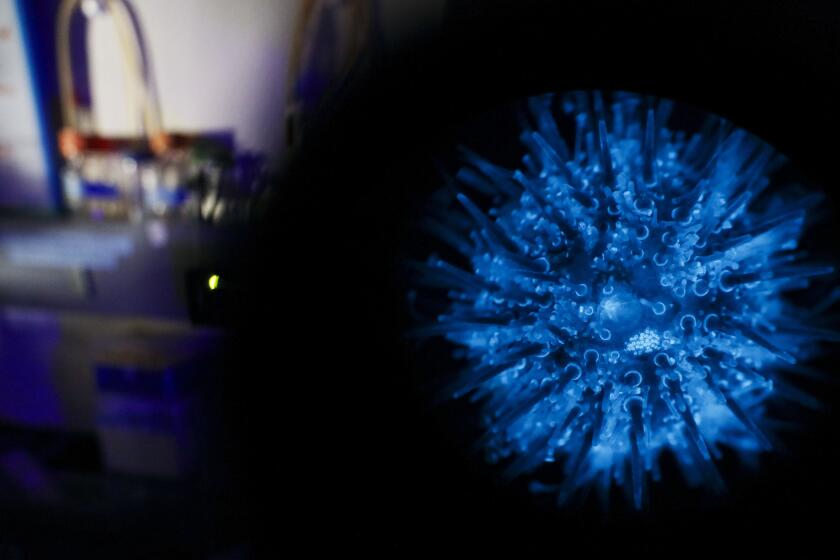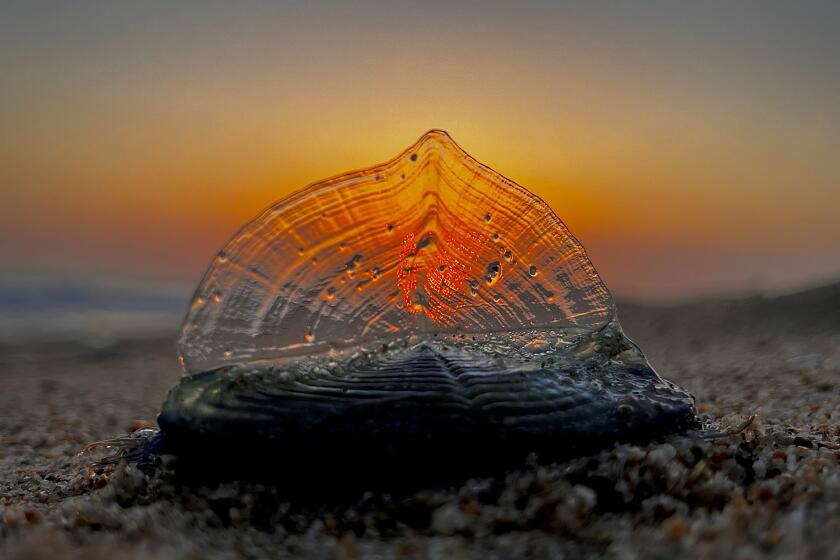A tiny fern with a big secret just got into the Guinness Book of World Records
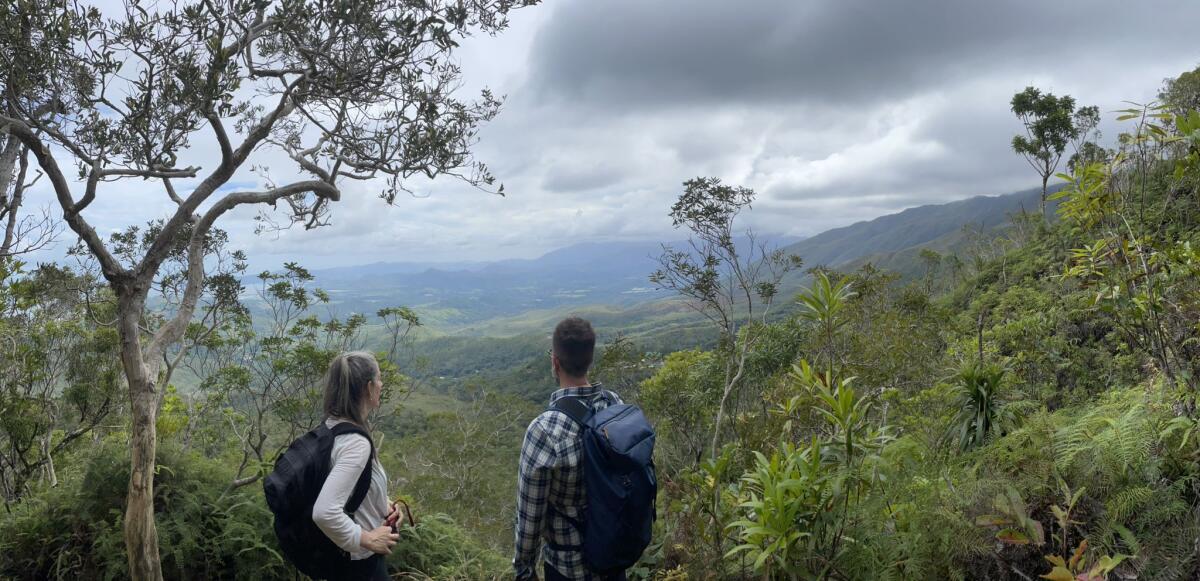
- Share via
Tmesipteris oblanceolata is an obscure species of fork fern found in New Caledonia, a French territory in the South Pacific. Just 4 to 6 inches tall, the humble plant is, in one particular way, the most remarkable living thing in the world.
“You would walk over it. You might even tread on it without knowing it,” said Ilia Leitch, a plant evolutionary biologist and senior research leader at the U.K.’s Royal Botanic Gardens, Kew. “But it houses within it this great secret.”
Recently, T. oblanceolata entered the Guinness Book of World Records after a team of scientists determined that the wispy fern has the biggest known genome of any living organism. Crammed into the nucleus of every one of its cells are 160.45 billion base pairs — 160.45 billion rungs on the twirling double-helix ladder that is the plant’s DNA.
T. oblanceolata has more genes than the mighty California redwood (Sequoia sempervirens) or the massive blue whale (Balaenoptera musculus). It has 50 times more DNA than Homo sapiens, the species that figured out what DNA is in the first place. The findings were published in the journal iScience.
A success at Scripps in San Diego means scientists can run experiments on painted sea urchins, potentially unlocking new discoveries in biology.
“We were absolutely astonished when we found out how big this genome was,” said botanist Jaume Pellicer of Institut Botànic de Barcelona in Spain, a co-author of the study along with Leitch. “We already knew about the existence of giant genomes in the genus but did not anticipate that the one in Tmesipteris oblanceolata was going to beat any previous records.”
A genome contains all the information cells need to direct the growth and development of the organism. But life doesn’t offer up instructions in the tidy, more-steps-equals-more-complexity way of Ikea or Lego assembly manuals — hence petite ferns with jumbo-sized genetic codes.

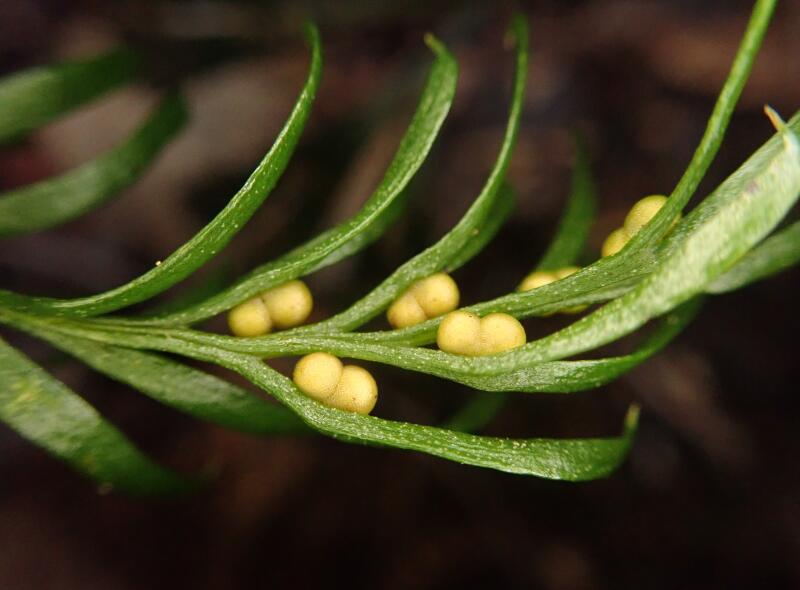
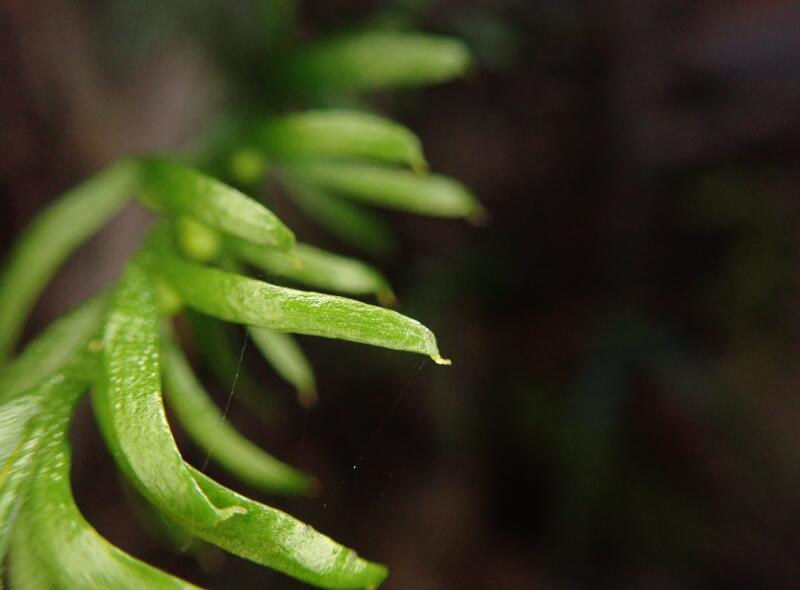
You might step on T. oblanceolata “without knowing it,” a plant evolutionary biologist said. (Photographs by Pol Fernandez and Oriane Hidalgo)
Measuring genome size is “not a way to measure genome complexity or coding capacity,” said Elliot Meyerowitz, a Caltech biologist who was not involved in the research.
Only a minuscule sliver of the genetic material that most plant and animal cells lug around actually contains direct instructions for how to make the building blocks that make up living things. Less than 2% of the human genome actually codes for proteins. For the fork fern, the research team estimates that less than 1% of its genome does.
The rest is known as noncoding DNA. Understanding what that noncoding genetic material does and why cells haul it around are among the biggest questions in evolutionary biology.
Half a century ago, scientists dismissed this noncoding stuff as “junk DNA,” a term now considered “a reflection of our own ignorance,” Leitch said.
It’s not that it all does nothing, she said. We just don’t yet understand everything that it does.
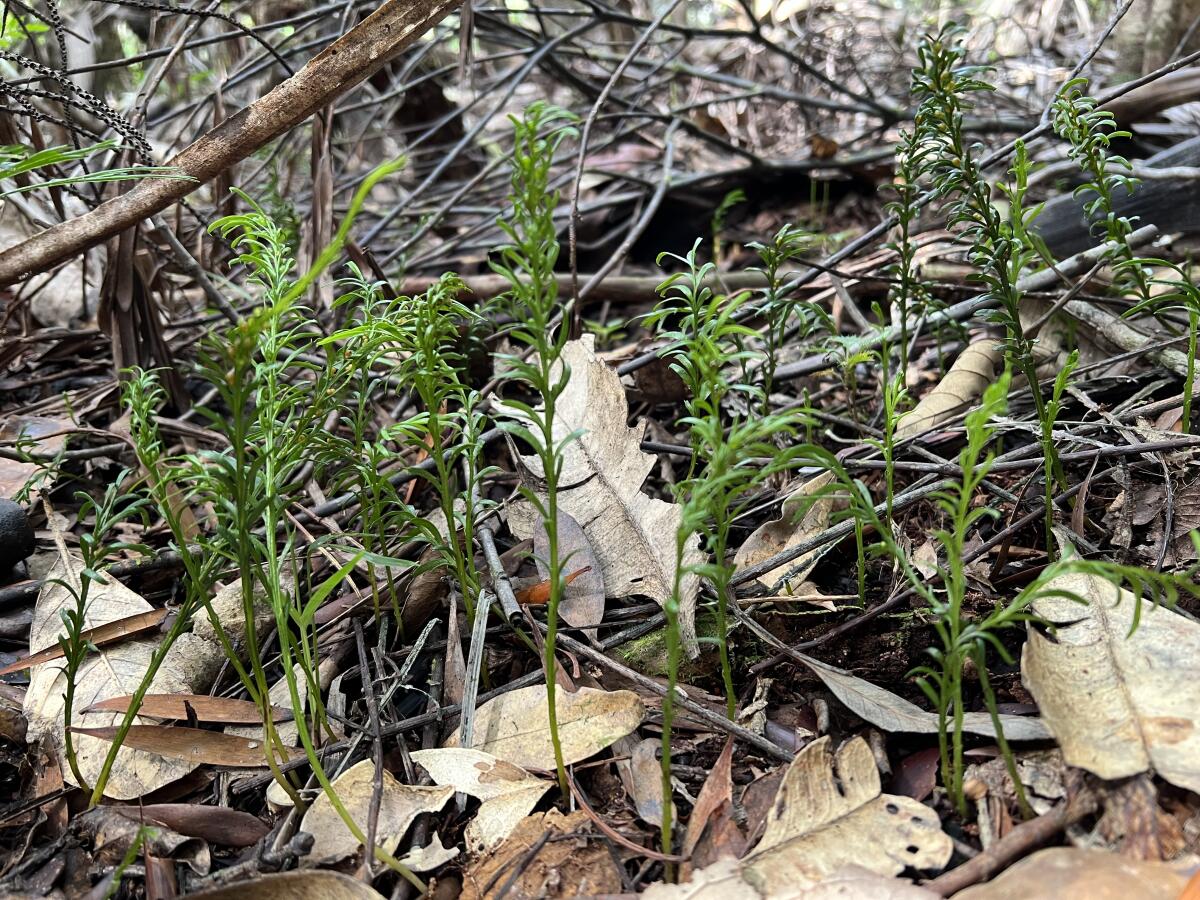
In recent years, researchers have found that manipulating or deleting some of these noncoding sequences affect gene expression. This suggests that at least some of this material plays a role in the processes that “switch” genes on and off, “like the conductor of an orchestra, saying who comes in here and who should be quiet here,” Leitch said.
This intricate choreography of gene expression is how we get the incredible diversity within our own species and across the kingdoms of living things.
“Understanding how these genomes function and are structured represents the ultimate milestone in this field of research,” Pellicer wrote in an email. “But for now, it is like trying to read a book of instructions without even knowing where page one is!”
T. oblanceolata displaces the previous genome record holder, a modestly sized flowering plant called Paris japonica that has 149 billion base pairs. While there may be something else out there packing a bigger genetic punch, botanists believe these plants are at the upper end of how much DNA a living thing can have.

“If it’s not the biggest, it’s jolly well close to it,” Leitch said of the fork fern’s genome. “There are so many consequences associated with having so much DNA that I think we’re at the limits of what biology can cope with.”
An organism has to divide its cells in order to grow, and before it can do that it has to make a copy of all the DNA in its cells. Copying a colossal genome is a big investment of time, energy and nutrients, Leitch pointed out. For plants, bigger genomes are associated with slower growth and less efficient photosynthesis.
As a result, organisms with massive genomes tend to be found in stable environments without much competition, Leitch said. That’s true of T. oblanceolata, slow-growing Paris japonica and the marbled lungfish, holder of the animal kingdom’s largest genome (nearly 130 billion base pairs).
Unfortunately for T. oblanceolata, stable conditions are increasingly hard to come by in a rapidly changing climate.
“As long as they’re stable, as long as things don’t change, selection won’t weed them out, so to speak,” Leitch said. “I would predict that if the environment changed, they would not be in a good position.”
What are those blue things washing up on Southern California beaches? Velella velella, of course. Also known as by-the-wind sailors. They’re kind of like jellyfish.
